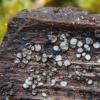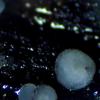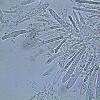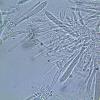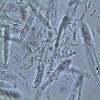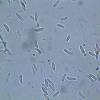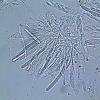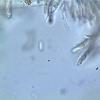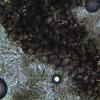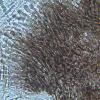
20-12-2025 23:08
Patrice TANCHAUDBonsoir, récolte sur sol sablonneux dans l'arri�

21-12-2025 09:32
Hello.A tiny ascomycete found embedded in wood in

20-12-2025 15:47
Mirek GrycHi.These grew on pine wood that was heavily covere

18-12-2025 21:17
Pol DebaenstThe identification took me to Byssonectria deformi

15-12-2025 07:09
 Danny Newman
Danny Newman
indet. Rutstroemiaceae sp. on unk. fallen leavesMc

19-12-2025 10:10
Patrice TANCHAUDBonjour, récolte réalisée en milieu dunaire, a

18-12-2025 17:23
 Bruno Coué
Bruno Coué
Bonjour,je serais heureux d'avoir votre avis sur c
 Hola tengo esta Mollisia que en principio pensaba que seria M. cinerea, pero al KOH es negativo, puede ser M.hydrophyla ?????.
Hola tengo esta Mollisia que en principio pensaba que seria M. cinerea, pero al KOH es negativo, puede ser M.hydrophyla ?????.Recogida en pino a unos 1600m.
0,80--0,93 diametro.
KOH negativo
IKI +, no maranja el asca
Parafisis x3--x4 (X6) apice redondeado
ascas de 50 x 6---50 x 7---52 x 6,5---53 x 6,4---58 x 7---60 x 7.
esporas de 8 x 2,6---8 x 2,8---9 x 2,5---9 x 3---10 x 2,7---10 x 3---11 x 2,9 (15x3).
Textura globosa, celulas del margen un poco piriformes miden 20--28 x 4--6
Un saludo
Rafael

Hello Rafael,
it is surely not M. hydrophila, which is confined to Phragmites (rarely other grasses may be), has more oil in the spores, a yellow KOH reaction (not always constantly) and masses of cristals in the medulla.
What you have there I can't say. Probably it is what I tend to call M. olivaceocinerea, the most common species of the cinerea-complex. Then you should see a little bit of oil droplets in the spores. If they are really completely empty, then I don't know. I don't think it is M. cinerea ss. str., which has smaller spores (6-9 µm, max. 10 µm long) and a bit different macroscopic appearance.
best regards,
Andreas

la camara del micro no permite captar muchos detalles, pero en los dos polos de las esporas se ven unos gotoitas muy pequeñas
Un saludo
Rfaeal

Hola Rafael,
in Mollisia olivaceocinerea the excipulum often becomes olivaceous-greenish with KOH and not grey as in the other Mollisia species. This is not a constant character, but when it is to see, it is a good hint for this species.
Also the hymenium becomes a bit cream coloured when slowly (!) drying. You can see that in the field in older apothecia.
best regards,
Andreas

